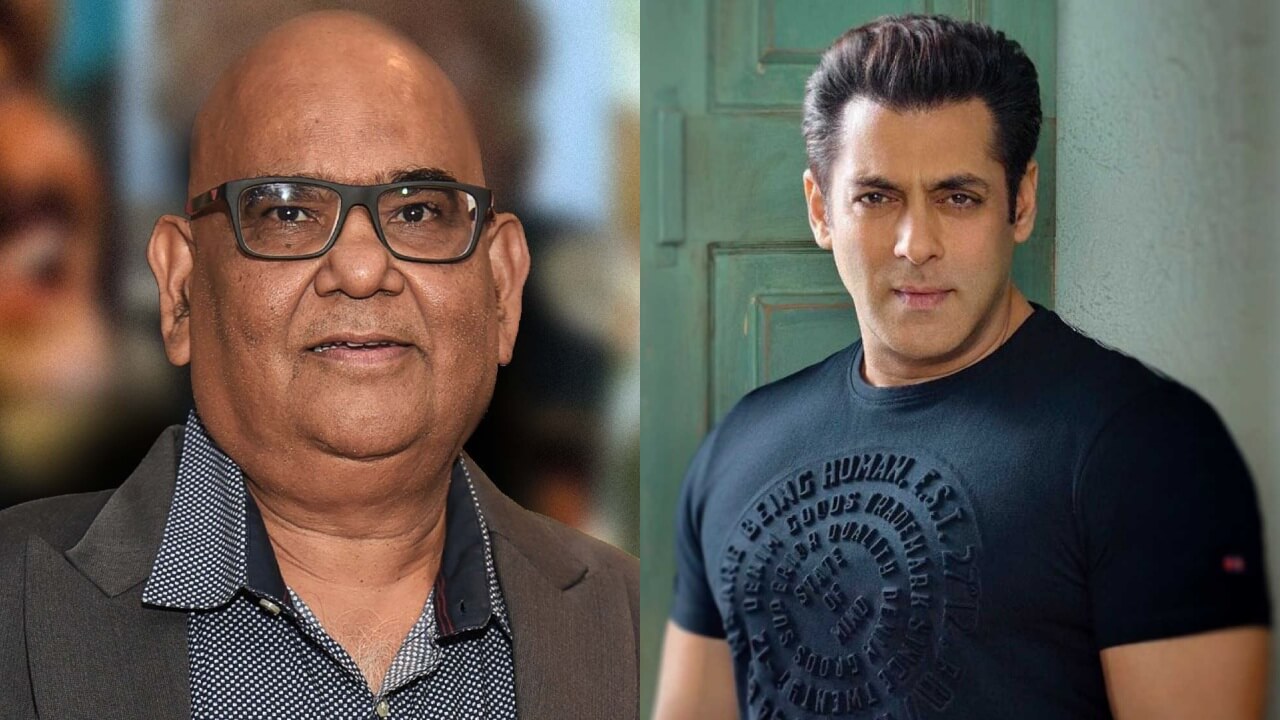This is the first time Satish Kaushik is not with us on his birthday.Satish’s Tere Naam was released in August 2003 a week after Hrithik Roshan’ s sweet and innocent act in Koi…Mil Gaya Salman Khan shocked us , and not only because his character Radhe is the last word in heroic aggression. We would think that the controversies in the actor’s life, not to mention the string of wimpy debacles like Yeh Hai Jalwa and Tumko Na Bhool Payenge, would dim the tidal waves of Salman’s personality.
In Tere Naam he whipped out a defiantly definitive performance, easily his best yet.As Radhe the local campus hero with unruly hair falling to his cheeks(which he brushes off daintily during emotionally revealing moments) and with an attitude to match , Salman delivers a slammer. Exuding a blend of arrogance and benignity, spitting bloodied fists at the local goons one minute, eyes brimming with lovelorn anguish the next minute, the star makes an illimitably powerful impact , specially in the second-half where chained and muffled in a lunatic asylum, Salman’s eyes express the unspeakable torture of unconsummated love .
Director Satish Kaushik has been so far associated with fluffy often idiotic family dramas like Badhaai Ho Badhaai and Hamara Dil Aapke Paas Hai. In Tere Naam he’s on far more adventurous and fulfilling territory. He paces the film evenly and doesn’t compromise on the protagonist’s volatile character even if it means showing Radhe perched dangerously in the twilight zone. The tender courtship with the hitherto -uncouth Radhe is spiced by some smartly written verbal exchanges(veteran writer Jainendra Jain at his best) that manifest the smalltown youth’s attitude to girls and romance, even as they bring out the fireball of turmoil that’s Radhe’s psyche.
The unlikely object of Radhe’s undying adoration is Nirjala, a sweet petite demure priest’s daughter, played with disarming naivete by debutante Bhoomika Chawla, whose presence alone reduces Radhe to a gelatinous mass of quivering ecstasy.Radhe’s redhot anguish at being rejected by the docile girl nextdoor is perfectly mirrored in Salman’s fits of ferocious hysteria and whining whimpering dejection.
Kaushik uses the the Agra backdrop effectively to convey a crusty rugged cow-belt ambience. But the sequences after Radhe moves to an ayurvedic mental asylum are oppressively dark. The horrified awareness of a mentally recuperated man that he many never come out of the hellish healing-place, turns the romance of the first-half into a quasi-horror drama that audiences would find unsettling and revolting.
In the end when Radhe turns his back on a socalled sane society to go back to the asylum you wonder if such abject defeatism is palatable to today’s joy-starved audience. Like many South Indian adaptations including Saathiya , the courtship scenes are located on a bustling railway platform. The soundtrack is interestingly coherent, with natural and manmade noises fusing in a raga of modern anarchy. S . Sriram’s cinematography is outstanding . The bright sunlit outdoors in the first-half manifest Radhe’s romantic awakening while the claustrophobic gloom of the second-half take us deep into the sunless realm of madness and despair.
Either way, the film basks in the prismatic colours of cinematic life in all its glory.Those who have seen the Tamil star Vikram play the same role in Sethu swear the character couldn’t go into better hands. Watching Salman swerve effortlessly through the dark and rocky terrain of his complex character’s psyche I am not too sure of that. Obsessive unrequited love has been done by many actors in the past from Dilip Kumar in Mehboob Khan’s Andaz to Amitabh Bacchan in Parwana to Shah Rukh Khan in Anjaam. But none has done it with such stunning physical and emotional aggression. Salman takes over the show with gut-wrenching and finally devastating impact. The supporting cast has some extremely capable actors including Sachin Khedekar . But this is Salman’s show all the way. And what a massive blow he delivers to all his detractors


